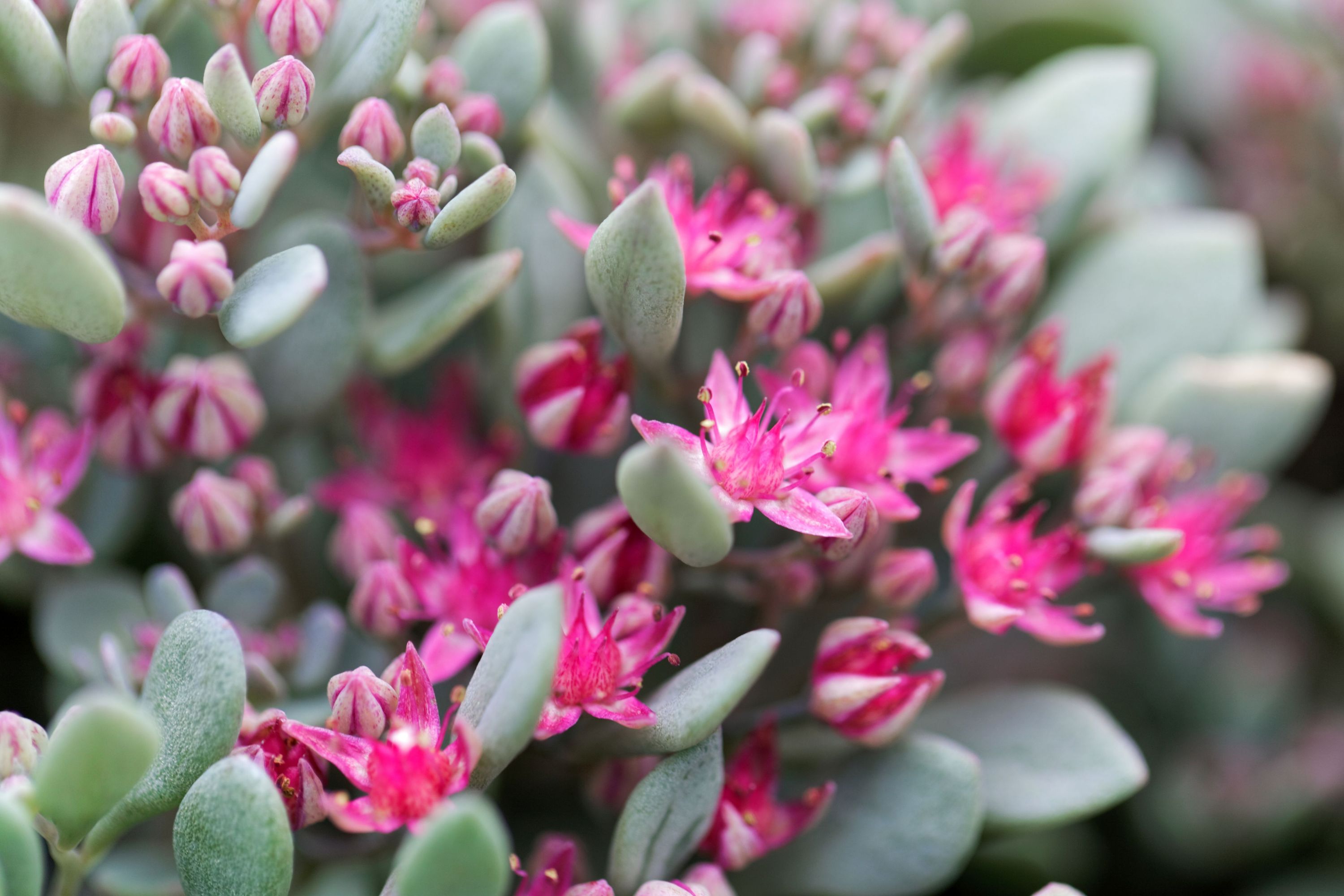October Daphne
(Hylotelephium sieboldii)

Description
Hylotelephium sieboldii, commonly known as October Daphne or Siebold's Stonecrop, is a succulent perennial plant that belongs to the family Crassulaceae. It is native to China, Korea, and Japan, where it grows on rocky outcrops and cliffs. In recent years, Hylotelephium sieboldii has become a popular garden plant due to its attractive foliage, colorful flowers, and easy cultivation. In this article, we will provide a comprehensive guide to Hylotelephium sieboldii, including its physical characteristics, cultivation requirements, and potential uses. Physical Characteristics: Hylotelephium sieboldii is a low-growing perennial plant that typically reaches a height of 30-45 cm (12-18 inches) and a spread of 30-45 cm (12-18 inches). Its leaves are fleshy, oblong-shaped, and arranged in opposite pairs along the stems. The leaves are blue-green in color and have a powdery, waxy coating that gives them a whitish appearance. The edges of the leaves are slightly scalloped, and the tips are pointed. In the late summer and early fall, Hylotelephium sieboldii produces clusters of small, star-shaped flowers that are pink or reddish-purple in color. The flowers are held on erect stems that rise above the foliage and can reach a height of 60 cm (24 inches). The flowers are followed by seed pods that contain small, brownish-black seeds. Cultivation Requirements: Hylotelephium sieboldii is a hardy plant that can be grown in a variety of conditions. It prefers full sun to partial shade and well-drained soil that is slightly alkaline. In its native habitat, it grows in rocky, nutrient-poor soil, so it is not particularly fussy about soil fertility. However, it does not tolerate wet soil and will quickly rot if planted in soil that is too moist. Hylotelephium sieboldii is drought-tolerant and can survive periods of dry weather, making it an excellent choice for xeriscaping. It is also deer-resistant and can tolerate light frost, although it may need protection in areas with severe winters. Propagation: Hylotelephium sieboldii can be propagated by seed or vegetative cuttings. To propagate by seed, collect the seed pods after the flowers have faded and allow them to dry out. Sow the seeds in the spring in a well-draining soil mix, and keep them moist until they germinate. Vegetative propagation can be done by taking stem cuttings in the summer and rooting them in a soil mix. Once the cuttings have rooted, they can be transplanted to their permanent location. Uses: Hylotelephium sieboldii is primarily grown as an ornamental plant in gardens and landscapes. Its attractive foliage and colorful flowers make it a popular choice for rock gardens, borders, and containers. It is also used in xeriscaping and can be planted on slopes or in areas with poor soil. In addition to its ornamental value, Hylotelephium sieboldii has several potential medicinal uses. In traditional Chinese medicine, it is used to treat a variety of ailments, including hemorrhoids, menstrual disorders, and respiratory infections. Recent studies have shown that the plant contains compounds with anti-inflammatory and antioxidant properties, which may explain its medicinal effects. Conclusion: Hylotelephium sieboldii is a versatile plant that is easy to grow and has many potential uses. Its attractive foliage and colorful flowers make it a popular choice for gardens and landscapes, and its drought tolerance and deer resistance make it a practical choice for most households.
Taxonomic tree:







